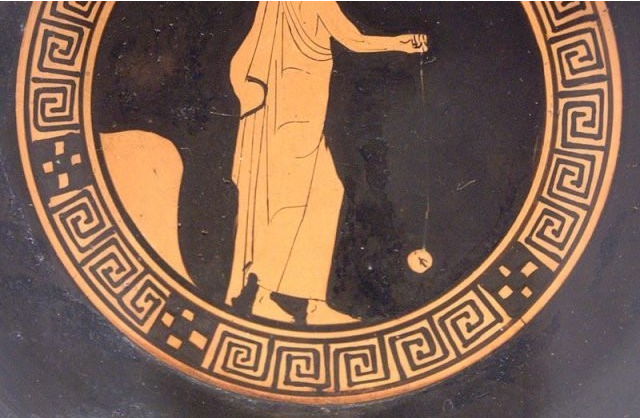Ever wondered how toys looked 2,500 years ago? Well, the answer to that question is―the same as today. At least to some degree, for dolls of all kinds are confirmed to have existed as part of everyday life even in ancient times. Second only to dolls, which are considered to be the oldest known toys to survive throughout the centuries, one toy remains as captivating as ever.
The Yo-Yo is believed to have originated from a Chinese toy known as the Diabolo. From China, it is thought that the toy expanded its popularity in two directions. The first was toward Europe, Ancient Greece to be more exact, and secondly to the Philippines, in southeast Asia.
In Greece, a yo-yo resembling toy can be seen on vases dating from the year 500 B.C., which happens to be the first official mention of this pastime invention in history. Greek society was based on a number of initiation rituals, and it is today believed that the toy, mostly made of wood, clay, or even metal, served as an offering to the gods in order to signify the coming of age of the child. Due to its fragile nature, clay was the most probable option when it came to the ritual offerings, while wood and metal were used for kids entertainment. Images depicting similar objects were also found in Egypt, which illustrates the way this curious device traveled the world, captivating minds of grown-ups and children alike.
Vases depicting the toy, as well as remains of a terracotta disc that was used to form this simple entrapment, can be seen exhibited in the National Museum of Athens, Greece.
121-year-old chocolate commissioned by Queen Victoria in 1900 found
As for the evolution of yo-yo in the Far East, it went from the favorite pastime of children to a deadly weapon used both for hunting and warfare. In the 16th century, Philippines warriors would climb a tree and wait for their prey with a larger, sharpened device made of rock, which functioned on the same principle as the toy. The word itself means “come-come” or “to return” in Filipino, describing the basic trait of the toy. Thus, the modern name is considered to be derived from the Filipino language.
In 1765, the yo-yo emerged in India, from where it traveled back to Europe as an exotic and mysterious plaything of the Orient. Around the French Revolution of 1789, it was already spread among the aristocracy as a means to reduce stress and tension by continuously performing the repetitive action of “yo-yo-ing”. Of course, in France, it was known by different names; it was dubbed the “L’emigrette,” “Bandalore,” and “joujou de Normandie.” Some would argue that the French word for a toy―joujou―was adopted into other western cultures as the name for the device, but others beg to differ, supporting the Filipino theory.
Read more: Greece High Definition








































